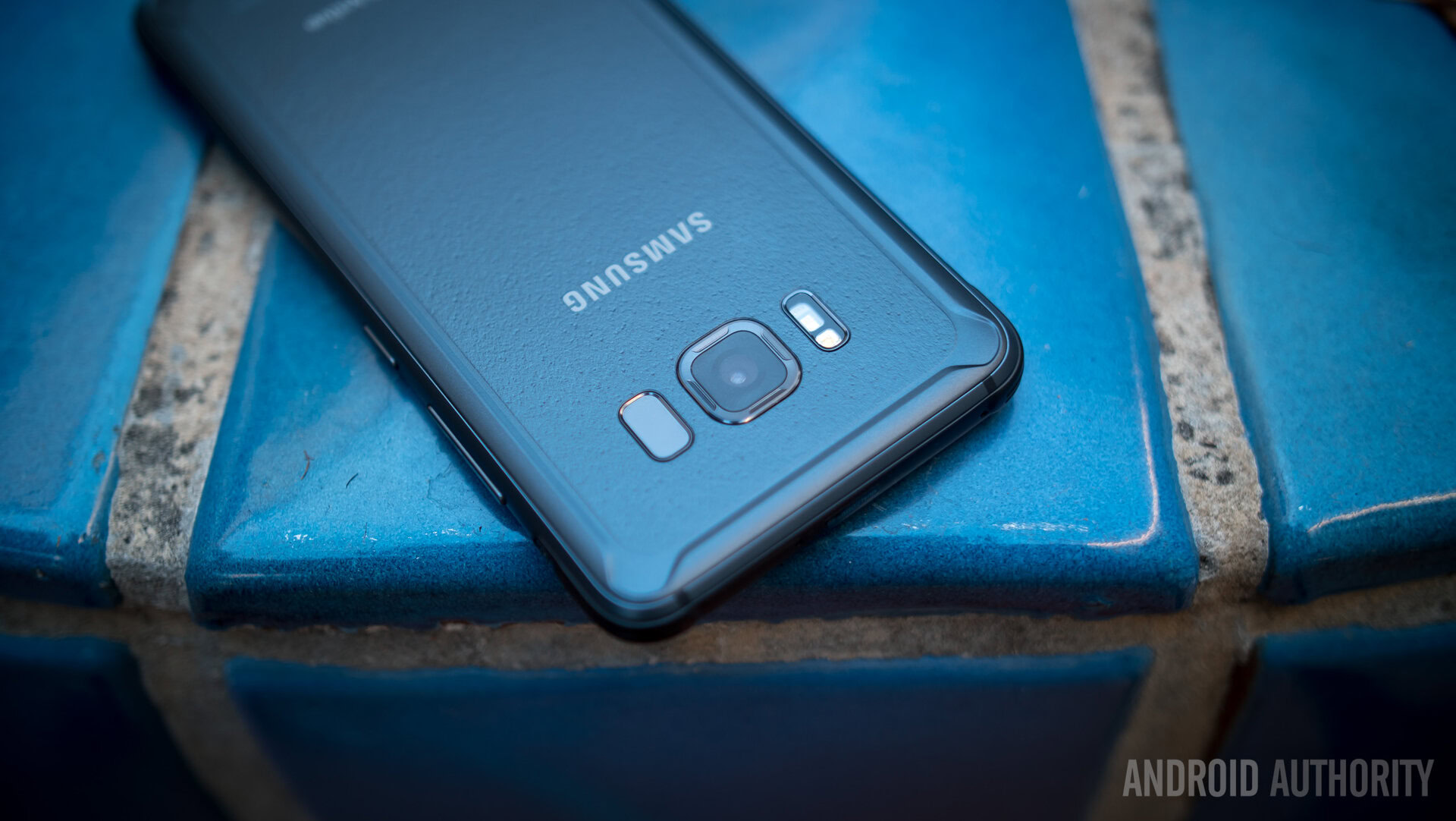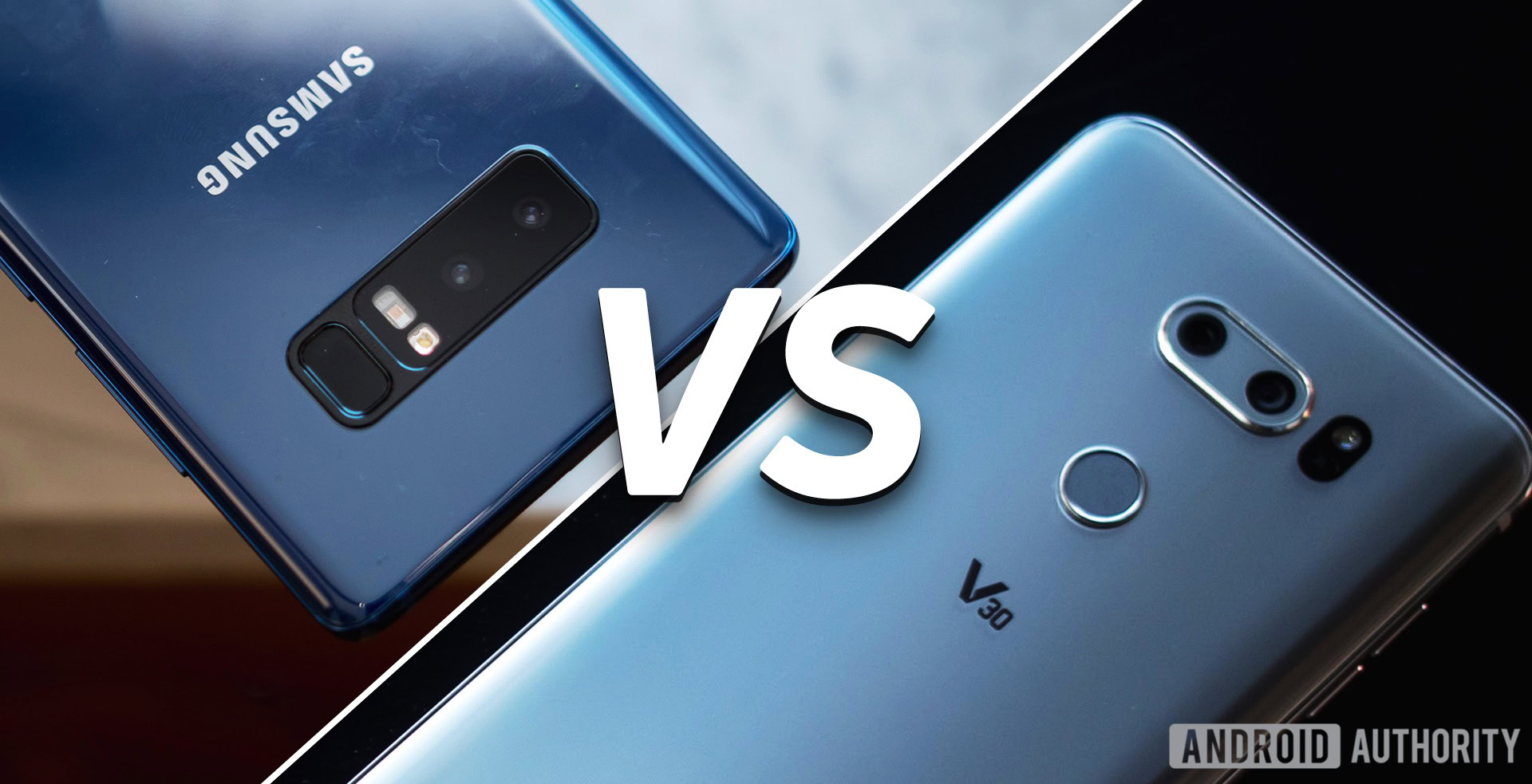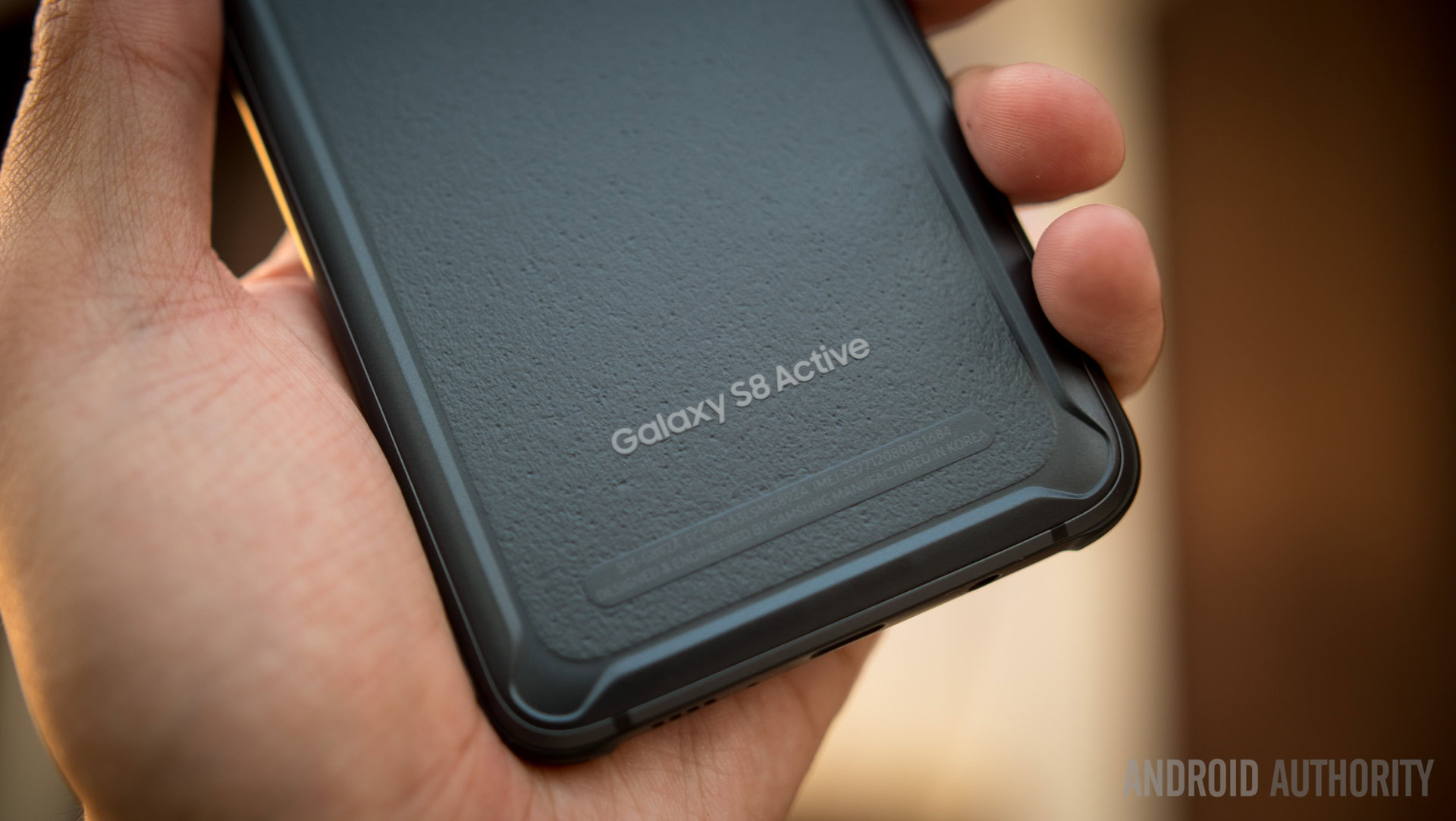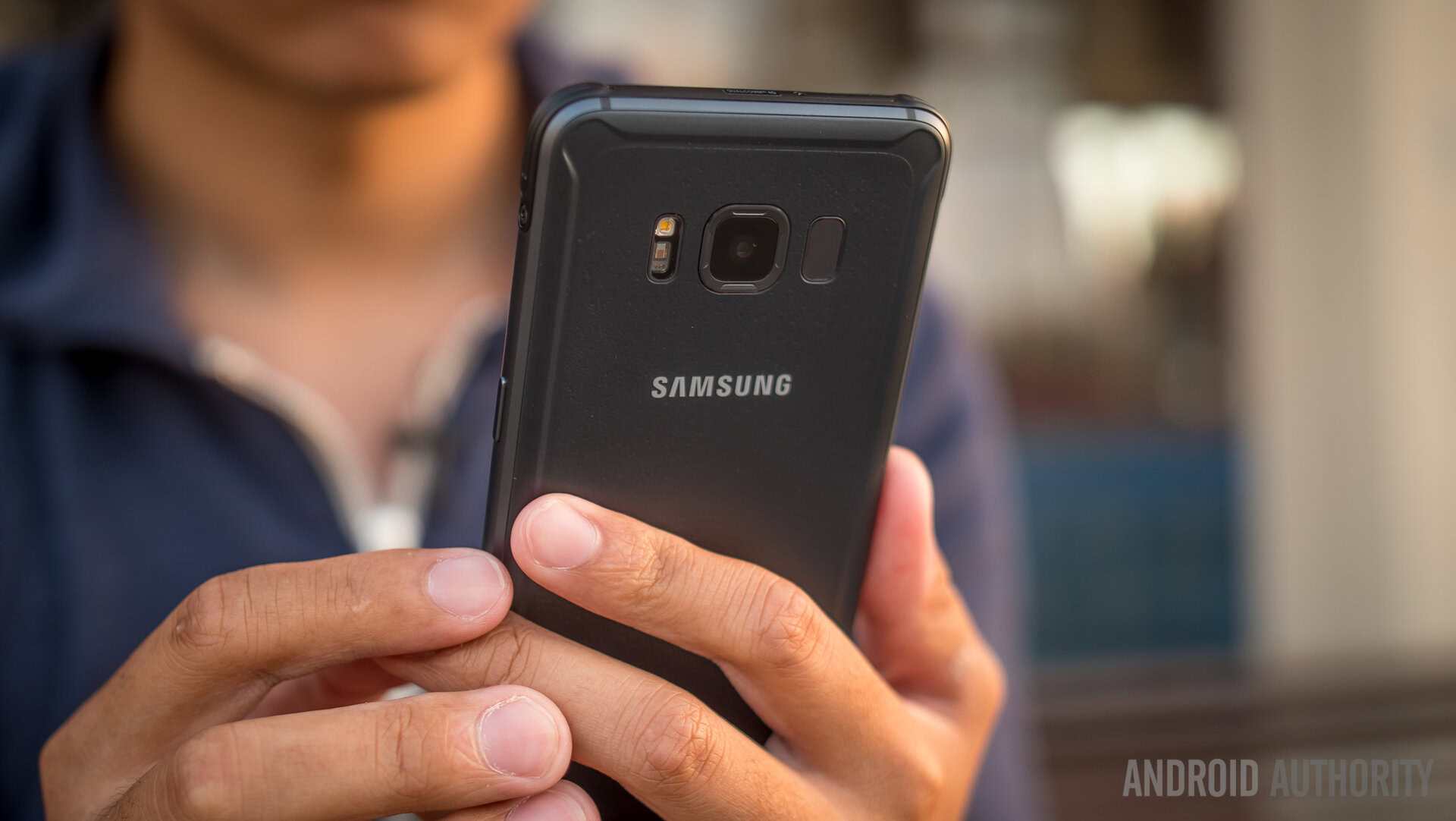Affiliate links on Android Authority may earn us a commission. Learn more.
Samsung Galaxy S8 Active: Why?

Why does the Samsung Galaxy S8 Active exist? Don’t get me wrong, there is always something good about having choice in the Android space, but more so than any other year before it, this Active version of the original Galaxy S smartphone seems redundant. The Active line used to bring some different features underneath a dramatically different design which set it apart, but now it feels outdated. In this piece, we’re going to look at a few of the reasons why I personally think the Active line has lost its way.

I used to be a huge proponent of this version of Samsung’s flagship lineup. Back at E3 2015, the Galaxy S6 Active was what was on my mind. It had just been announced a couple of months earlier and it seemed to look much better than the Galaxy S5 Active from the year prior.
Once I got my hands on it, I understood another reason why I wanted the Active – the Galaxy S6 that year was a stark change from the plastic designs of Samsung’s recent past, as glass and metal bodies became the new design language. I never thought the previous S5 was a looker, but the S6 Active felt like the best of both worlds and I honestly thought it looked great.
Whereas glass on glass bodies were clearly going to define our future, I was trying to hold on to the past: a time when phones were meatier, sturdier, and less inclined to go for what could only be considered more delicate designs.

Design
I still feel the same way about today’s phones – glass is king, but there are some phones I have gravitated to because they don’t just follow the pack. My recent piece on the BlackBerry KEYone as my daily driver is a great example of this. You would think that now, more than ever, the Galaxy S8 Active is trying to scratch that chunky itch in Samsung’s own huge inventory of glass and metal-clad phones.
But Samsung was able to make the Infinity Display, once called the Edge Display, one of the most sought after design features in their main flagships. By the time of the Galaxy Note 7, the curved display had proven itself as more than eye candy – it is now Samsung’s default way of getting larger screens onto smaller bodies. As I said numerous times in the Galaxy S8 hands on and review, the feel of the 5.8-inch phone is simply sublime.
The smartphone industry as a whole is moving toward this minimal bezel, big-screen-for-less philosophy
The smartphone industry as a whole is moving toward this minimal bezel, big-screen-for-less philosophy, so the throwback design of the Galaxy S8 Active doesn’t give off the same good vibes as before. This screen is flat, the bezels are so much bigger than we’re used to anymore, and the phone has a heft that, while still welcome, is contrary to the kind of slim and light bodies that were once foreign a few years ago and are now the norm. Bigger bodies can mean better durability, though.
Protection
Don’t get me wrong – there are very valid reasons to go for the Active over the original S8 and S8 Plus. Users who have butter fingers will have a much better time when they inevitably drop this phone. Most people would definitely prefer to suffer some scuffs on a harder plastic material rather than shattered glass on either side of the phone.
But smartphone manufacturers have gotten better and better at providing IP certifications with their flagship devices without compromising current design tropes or by resorting to covers, gaskets, and seals. So the enhanced water-resistance of the Active line isn’t as big of a deal as it once was.
The Active is an example of a phone that tries to look as tough as it actually is, or maybe it’s the other way around. A while back, the big draw of a rugged phone like the Galaxy S8 Active would have been that it had MIL-STD-810G certification. But now phones like the LG V30 – in some ways just as beautiful as the Galaxy S8 – also have a MIL-STD-810G rating.
Considering the LG V30's looks and MIL-STD-810G rating, is a phone with the design of the Active actually necessary anymore?
The S8 Active may well be more rugged than the V30, but the gap is not nearly as wide as it used to be. In the Android space, we now have phones that have managed to combine the two philosophies of the Galaxy S and the Galaxy S Active dichotomy: looks and ruggedness. When the time comes, we’ll drop them both to find out if a phone with the design of the Active is actually necessary anymore.

Not all of it is bad…
I do want to highlight one bright spot of this ruggedized phone: thankfully, some of what makes the Active line more appealing than its original counterparts remains – in particular, the internals. One major plus the S8 Active offers is in battery life. The Active isn’t chunkier for no reason – the larger body houses a 4,000 mAh unit that is 1000 mAh more than the original S8 and 500 mAh more than the S8 Plus. With all other things being equal, the S8 Active just goes harder for longer.
This is something that I really loved about the S6 Active and I’m happy to see it continue in the current generation. If you’ve complained about battery size in the S8 and S8 Plus, the S8 Active is worth considering for this fact alone.
The camera is unchanged and provides the same exact experience as the Galaxy S7 and the S8, and there is no problem with performance due to all phones across the board having the same technical specifications.
If you've complained about battery size in the S8 and S8 Plus, the S8 Active is worth considering for this fact alone.

Where’s my Active Key?!
The main significant loss with this year’s model of the Active is the Active Key. Anyone that knows me here is probably sick of me talking about extra inputs on phones – again, I bring up the BlackBerry KEYone because I can make so much happen easily with the help of shortcuts on the stellar physical keyboard. The Galaxy S Active had that kind of capability thanks to just that one extra button in the top corner. The loss of the Active Key made me immediately dislike this year’s edition of the Active.
It was such a subtle but powerful tool, a button that can be customized to open any application when you either press it or hold it down. I used it for so many different app combinations.
It wasn’t just for convenience, but for productivity.
A tap on the button brought me to the calendar, and a long press opened up my money management application. The phone’s longer battery life only enhanced this experience, allowing me to get more done on a single charge.
But in the new S8 Active, that key is gone, replaced by the bane of many a current Samsung user’s existence: Bixby. Now, I understand that Bixby has gotten better in recent months and, given a learning curve, users can get quite a bit out of Samsung’s assistant.
But just look at all the people who wanted to replace the function of the Bixby button to a user customizable state- exactly what the Active Key offered. Now you understand how I felt about Actives in years past: they offered everything I wanted with the ability to change what I didn’t.
Actives in years past offered me everything I wanted with the ability to change what I didn't.
I can see why the Galaxy S8 Active might appeal to some users, but considering where we are in the flagship game, I can’t help but think that the majority of users will gravitate more toward the curves of the originals. A bigger screen in a smaller body is much more enticing than a bigger body with a less accessible screen.
If you are looking specifically for the features that set the S8 Active apart, like its rugged looks and bigger battery, then have at it. But unfortunately for a user like me that used to love the Active line for even more, the list of reasons has shrunken as the list of things Samsung is trying to do has grown. It’s a jump forward followed by a stumble backward.